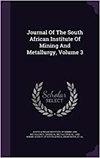高灰分弃煤和垃圾衍生燃料的共烧——灰烬和气体排放
IF 0.9
4区 材料科学
Q3 Materials Science
Journal of The South African Institute of Mining and Metallurgy
Pub Date : 2022-09-20
DOI:10.17159/2411-9717/2015/2022
引用次数: 0
摘要
这项研究的重点是将废弃煤炭与垃圾衍生燃料(RDF)共同燃烧,以利用南非丰富的资源进行能源生产,并减少垃圾填埋场的垃圾处理量。具有高灰分(>40%)的煤(南非一些发电站使用的一种等级)的潜力,以及其在减排方面与两种不同RDF的燃烧兼容性,已经得到证实。分析了煤、两种不同的RDF和不同比例的煤/RDF混合物燃烧和共燃烧产生的气体排放和灰烬残留物。其中一个RDF样本主要含有纸张(PB),另一个主要含有塑料(PL)。随着混合物中煤的比例增加,来自废弃煤和RDF的共烧灰的氯化物和碱金属含量降低。发现共烧混合物的结渣倾向非常低,而对于所有RDF<75%的混合物,结垢倾向从高降至中等。RDF与煤的共燃烧表明,对于含有25%弃煤加75%PL的样品,SO2排放量从387ppm(弃煤)减少到50ppm。15%PL至85%的煤混合物也将NOx排放量从145ppm(100%PL)减少到88ppm。对于85%废弃煤加15%PB的混合物,观察到的最低CO2排放量为6000ppm。已经确定,如果用于发电,能够产生最低硫排放的最有利的燃料混合物是25%的弃煤加75%的PL样品。本文章由计算机程序翻译,如有差异,请以英文原文为准。
Co-firing of high-ash discard coal and refuse-derived fuel - ash and gaseous emissions
This research focuses on the co-firing of discard coal with refuse-derived fuel (RDF) to utilize this abundant resource in South Africa for energy generation and reduce the volume of waste disposed of at landfills. The potential of a coal with a high ash content (> 40%), which is a grade used in some power stations in South Africa, and its combustion compatibility with two different RDFs in terms of emission reductions has been established. Gaseous emissions and ash residues from the combustion and co-combustion of the coal, two different RDFs and coal/RDF blends of different proportion were analysed. One of the RDF samples contained mostly paper (PB) and the other mostly plastic (PL). Co-combustion ash from the discard coal and RDFs showed a decrease in chloride and alkali metal contents as the coal ratio in the blend increased. The slagging propensity of the co-fired blends was found to be very low, while the propensity for fouling decreased from high to medium for all the blends with < 75% RDF. Co-combustion of RDF with coal showed a decrease in SO2 emissions from 387 ppm (discard coal) to 50 ppm for the sample containing 25% coal discard plus 75% PL. A 15% PL to 85% coal blend also reduced NOx emissions from 145 ppm (100% PL) to 88 ppm. The lowest CO2 emission observed was 6000 ppm for the blend of 85% discard coal plus 15% PB. It was established that the most favourable fuel blend that can produce the lowest sulphur emissions if used for power generation is the 25% coal discard plus 75% PL sample.
求助全文
通过发布文献求助,成功后即可免费获取论文全文。
去求助
来源期刊
CiteScore
1.50
自引率
11.10%
发文量
61
审稿时长
4-8 weeks
期刊介绍:
The Journal serves as a medium for the publication of high quality scientific papers. This requires that the papers that are submitted for publication are properly and fairly refereed and edited. This process will maintain the high quality of the presentation of the paper and ensure that the technical content is in line with the accepted norms of scientific integrity.

 求助内容:
求助内容: 应助结果提醒方式:
应助结果提醒方式:


